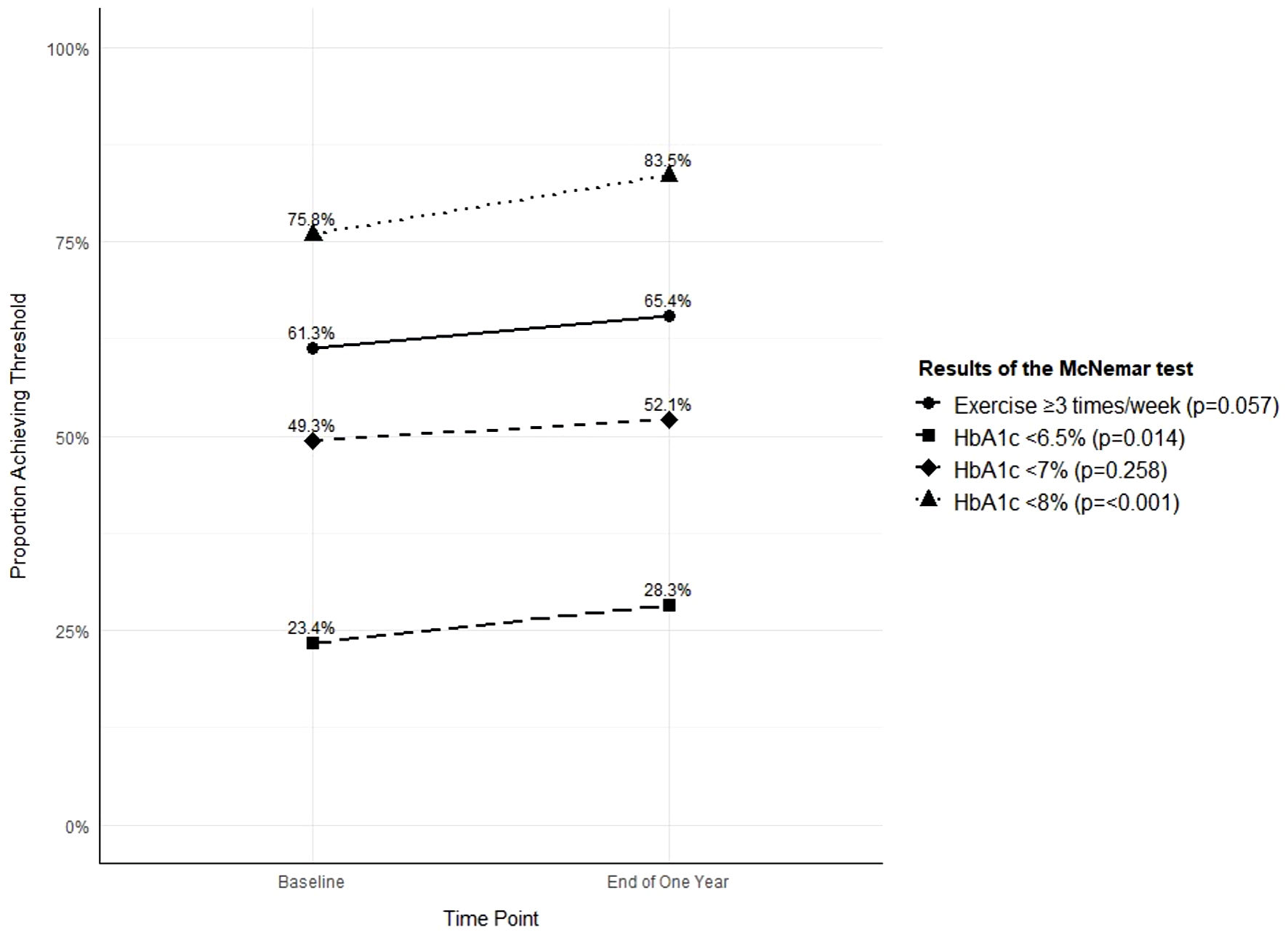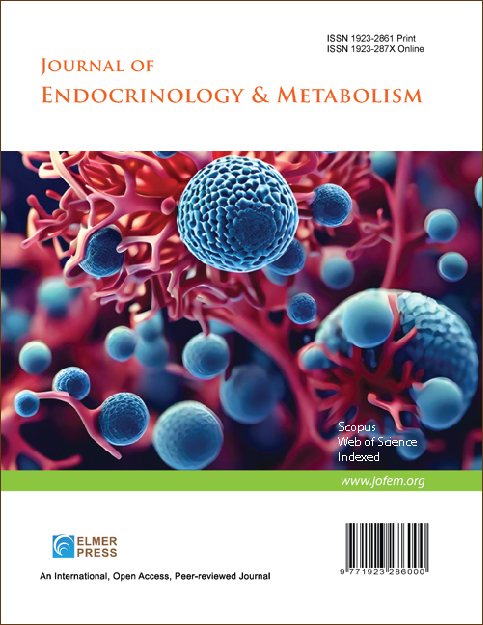Impact of the Diabetes Shared Care Program on Glycemic Control in Older Adults With Type 2 Diabetes
DOI:
https://doi.org/10.14740/jem1523Keywords:
T2DM, Elderly, A1C, DSCPAbstract
Background: This study aimed to assess the impact of the Diabetes Shared Care Program (DSCP) on glycemic control among elderly patients with type 2 diabetes mellitus (T2DM) over 1 year and identify factors associated with A1C level outcomes.
Methods: A retrospective cohort study was conducted at a regional hospital in central Taiwan from 2016 to 2020. The study included 509 patients aged ≥ 65 years with a confirmed T2DM diagnosis who participated in the program for at least 1 year. A1C levels were analyzed using three thresholds (6.5%, 7%, and 8%), and sociodemographic and health-related factors were examined. Statistical analyses included paired t-tests, the McNemar test, and binary logistic regression models.
Results: After 1 year in the DSCP, the mean A1C level significantly decreased from 7.37 ± 1.30 to 7.11 ± 1.13 (P < 0.001). Glycemic control patterns varied across A1C thresholds, with the most significant improvements observed at the 8% threshold, while improvements were less pronounced at the 6.5% threshold. Abnormal waist circumference was significantly associated with poorer glycemic control, with odds ratios of 2.570 (95% confidence interval (CI): 1.409 - 4.690, P = 0.002) for A1C < 6.5%, 2.360 (95% CI: 1.362 - 4.087, P = 0.002) for A1C < 7%, and 3.169 (95% CI: 1.909 - 5.261, P < 0.001) for A1C < 8%.
Conclusions: The DSCP significantly improved glycemic control in elderly patients with T2DM. Targeted diabetes education interventions should be implemented for older adults at higher risk, particularly those with abnormal waist circumference.

Published
Issue
Section
License
Copyright (c) 2025 The authors

This work is licensed under a Creative Commons Attribution-NonCommercial 4.0 International License.










